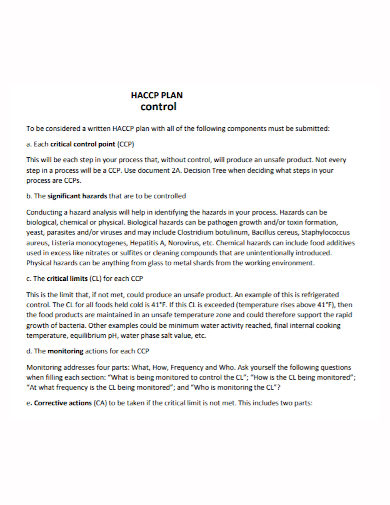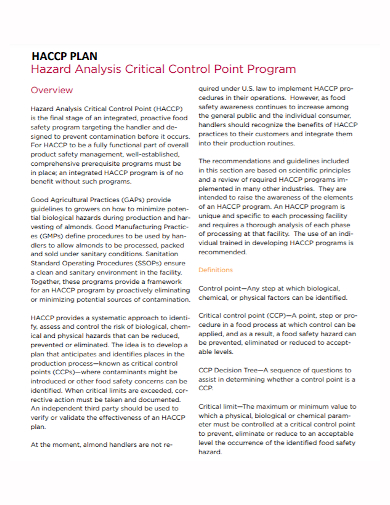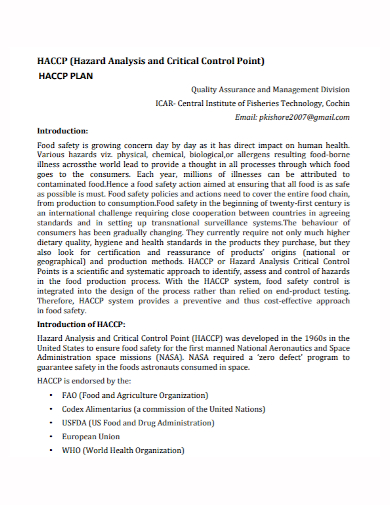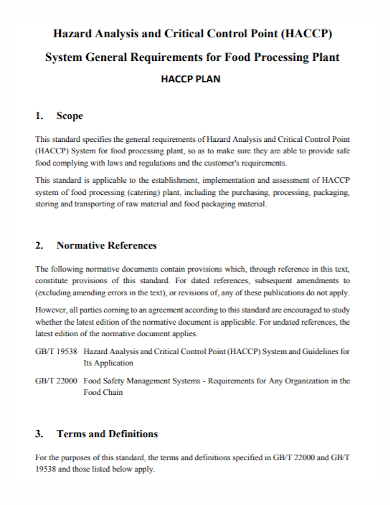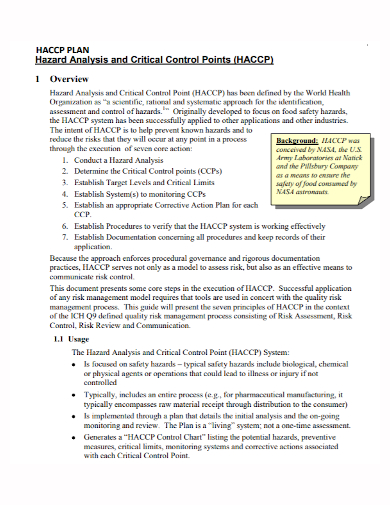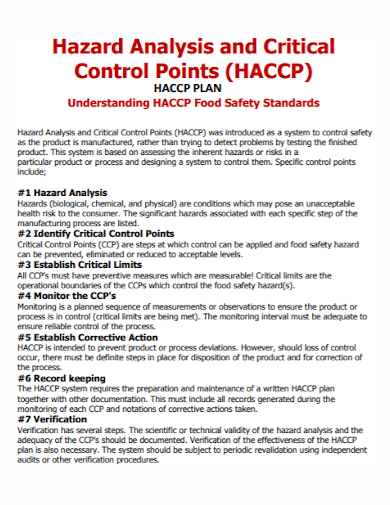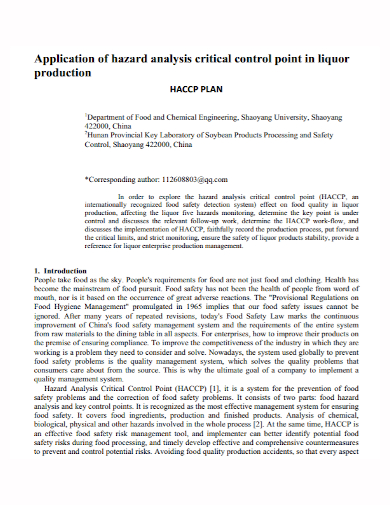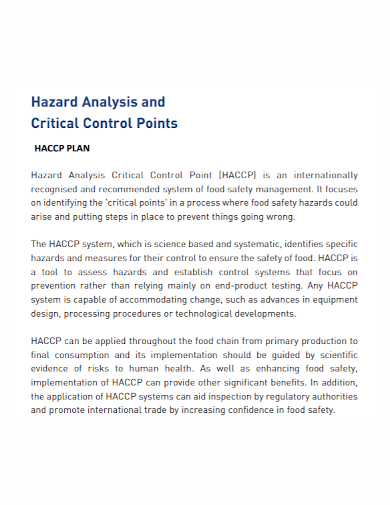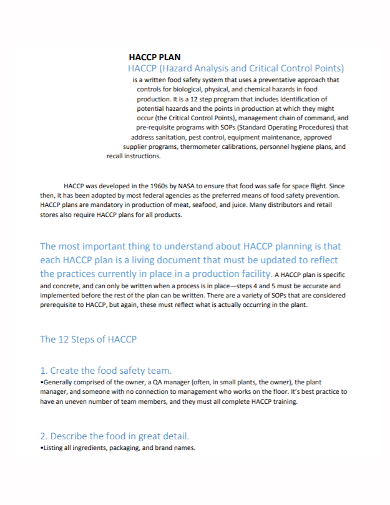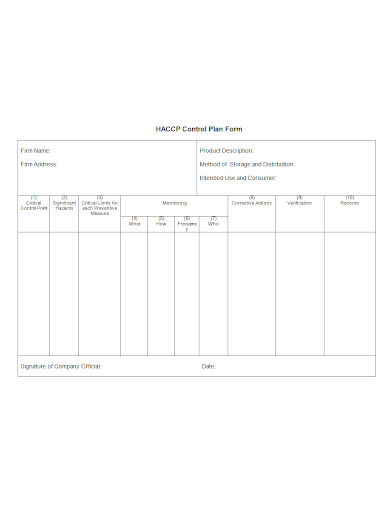A control plan is a living document that specifies the procedures used to ensure the quality of important inputs in order to produce outputs that meet client specifications. It includes a documented description of the measurements, inspections, and checks used to ensure that production parts and processes are in good working order. A HACCP plan is a food safety monitoring method for identifying and controlling biological, chemical, and physical hazards in perishable products storage, transportation, usage, preparation, and sale. It also identifies crucial control points in the food manufacturing process. Create this action plan to reduce the risk of food contamination and to minimize legal ramifications from foodborne disease.
10+ HACCP Control Plan Samples
1. HACCP Control Plan Template
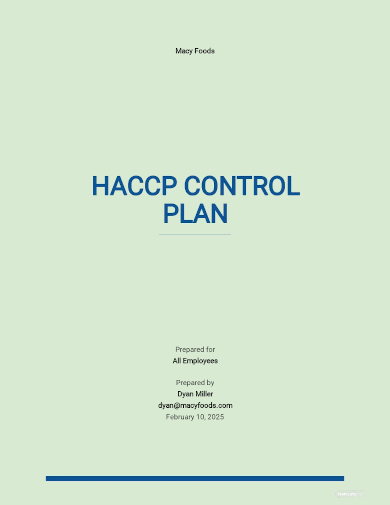
2. HACCP Control Plan
3. HACCP Control Program Plan
4. HACCP Quality Control Plan
5. HACCP System Control Plan
6. Sample HACCP Control Plan
7. HACCP Food Safety Control Plan
8. HACCP Production Control Plan
9. Standard HACCP Control Plan
10. Basic HACCP Control Plan
11. HACCP Control Plan Form
HACCP Steps To Help You Get Started
The responsible parties, the correct vision, and the collaborative diligence to carry out each step to ensure food safety are the foundations of a solid HACCP plan. The following are five steps to help you get started with building a HACCP plan:
- Building HACCP team – The success of your HACCP program is built on the caliber of your HACCP team. Individuals who have demonstrated their knowledge and skill in their respective professions should be included in your HACCP team. At least one person from each of the following disciplines should be recruited:- Quality control in the food industry
– Sanitation and cleanliness
– Operation of machines work in generalHaving an interdisciplinary team gives you access to all of your operation’s critical food safety issues. Knowing what to look for allows you to take the necessary precautions to reduce food safety hazards. - Product description and identification of its intended use and consumers – This step entails giving a general description of the food, including ingredients, processing processes, and distribution methods (e.g., frozen, refrigerated, or at a certain temperature.) Include the expected use of the food as well as the intended consumers with this information.
- Review the product and processes – The majority of employees tend to take the intricacies of their work for granted when performing day-to-day duties. This occurs mostly as a result of the repeating of operations. Habits, on the other hand, can remain even if they are no longer useful. The HACCP team can establish whether the current internal food safety processes and standards are still relevant and efficient by reviewing food products and processes. This allows for changes and updates to guarantee that food products are safe from preparation through delivery.
- Outline the updated process – The HACCP team must define the modified procedure in a clear and intelligible manner for employees to follow after making the necessary improvements to the process. Because of its linear shape, a flow diagram can assist eliminate confusion about the order of process steps.
- Follow the principles of HACCP – HACCP principles include conducting a hazard analysis, determining CCPs, establishing critical limits of CCPs, setting up a monitoring system, establishing corrective actions, establishing verification procedures, and establishing documentation.
FAQs
Why do you need a HACCP action plan?
Using a HACCP action plan to manage food safety and sanitation systems is a cost-effective strategy to ensure the success of your food business. HACCP compliance benefits your food industry in a variety of ways, including avoiding costly fines for food safety and hygiene violations, developing a strong brand that attracts new customers, improving food product quality and safety, reducing downtime and increasing efficiency, and providing due diligence defense
Why do we have to provide a corrective action?
When a deviation arises throughout the food manufacturing process, corrective actions are conducted. This enables employees to take the necessary precautions to avoid infection or other foodborne illnesses. Recooking, reheating, or discarding are all options for corrective actions.
What is an HACCP action plan template?
Many food establishments use a HACCP plan template as a guide to establishing an effective HACCP system. Paper forms, spreadsheets, scanning, faxing, and manual recordkeeping can all be made easier with digital HACCP plan templates.
If you want to see more samples and formats, check out some HACCP action plan samples and templates provided in the article for your reference.
Related Posts
FREE 9+ 30-Day Marketing Plan Samples in PDF | MS Word | Apple Pages | Google Docs
FREE 3+ Sales Team Action Plan Samples in PDF | MS Word | Apple Pages | Google Docs
Marketing Plan For Small Business Samples
FREE 7+ Fashion Business Plan Samples in PDF
FREE 10+ Sprint Planning Samples In MS Word | Google Docs | PDF
FREE 10+ Wedding Planning Samples in MS Word | Apple Pages | Powerpoint | PDF
FREE 9+ Monthly Study Planner Samples in PSD | Illustrator | InDesign | PDF
FREE 9+ Sample Curriculum Planning Templates in PDF | MS Word
FREE 10+ Teacher Development Plan Samples in MS Word | Google Docs | Apple Pages | PDF
FREE 10+ Basketball Practice Plan Samples in PDF
FREE 12+ School Business Plan Samples in PDF | MS Word | Apple Pages | Google Docs
FREE 7+ Client Strategic Plan Samples in PDF | MS Word
FREE 11+ Trucking Business Plan Templates in PDF | MS Word | Google Docs | Pages
FREE 7+ Small Hotel Business Plan Samples PDF | MS Word | Apple Pages | Google Docs
FREE 14+ Bakery Business Plans in MS Word | PDF | Google Docs | Pages

